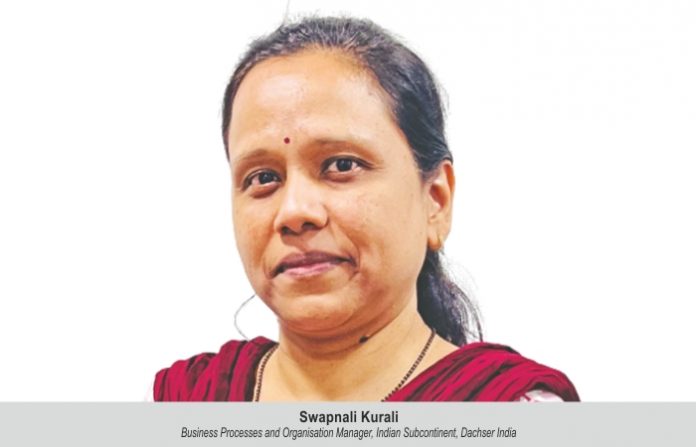Logistics industry supports new IT skills offering amazing level of tracking and tracing solutions for specialized products, mainly life science and perishables, says Swapnali Kurali, Business Processes and Organisation Manager, Indian Subcontinent, Dachser India. Planned GDP growth, EoDB and IT advances are also key growth drivers, she adds.
CT Bureau
How do you foresee the future of logistics and air cargo industry in the coming years?
India’s air cargo industry has grown steadily, and the importance of logistics has taken centre stage for its role in the economic development of the country. It was proven to be affordable solution for industries such as life sciences and healthcare, automotive and other time-sensitive products. More air freight processes are being automated, and airports, airlines, forwarders, and ground handlers are working together to integrate the processes to save time and reduce logistics costs.
The new IT capacities offer a phenomenal level of tracking and tracing for specialized products, mainly life science and perishable industries. With the current developments accorded by the Indian government in New Logistics Policy (NLP), the country will, undoubtedly, be at the top of the global air freight growth rankings in the coming years, with higher efficiency resulting from improved processes supported by IT.
What will be the key growth drivers in the future?
The key growth drivers are planned GDP growth, ease of doing business (EoDB) and the IT developments to achieve YOY growth targets we have set for ourselves. Digitalisation has made rapid inroads; it has helped every aspect of the supply chain process and will impact logistics in the coming years. Thus, real-time data, and real-time data analysis, for example, will become increasingly important in the future. Dachser has been a frontrunner in the sector to install new digital channels for the data flows that accompany the flows of goods. This has resulted in many new innovations and new understanding of networks and how to manage them. It provides integrated digital concepts to raise the bar for quality and productivity. The rising demand for environmentally friendly products will have an impact on the demand supply model. As a result, organizations must take sustainability seriously than ever before, launch initiatives aimed at reducing carbon emissions and protecting the environment.
What are crucial areas of concern?
When it comes to the Indian subcontinent, the industry is impeded by a lack of proper infrastructure in many areas. However, the importance of infrastructure is well understood, and thus we see a development projects that are supported by the region’s governing bodies, covering the expansion of key airports and establishment of infra in tier II and III cities. One of the issues that needs to be addressed is talent readiness. Organizations must be prepared with trained personnel to take part in this ongoing digital drive; frequently the lack of appropriate talent and untrained personnel slows down the pace of development. We must find sustainable solutions to complex problems, as the demand for environmentally friendly processes will increase from here.
- Dachser implemented initiatives to achieve its long-term goal of net zero emissions through efficiency, innovation, and inclusive responsibility
- We reduced paper consumption through the continuous digitalisation of document handling
- We promote renewable energies by purchasing green electricity and investing in new facilities to generate renewable electricity
- Dachser is quadrupling its own generation of green electricity from photovoltaic systems to over 20,000 kWp capacity by 2025. In addition, Dachser intends to source cent per cent green electricity for all its branches worldwide from 2022 onwards
The govt has allocated `74,000 crores for improving infra. Including PMGS and NLP, how do you think it will boost logistics growth?
The investment will aid in the development of better infra and multimodal connectivity with airports, ports, and railways, making the supply chain efficient. The PMGS and the NLP will fuel growth and provide the much-needed tailwind. These initiatives are focused on seamlessly connecting the airports and seaports to the industrial areas and result in savings for exporters and importers, thereby making us more competitive in the global marketplace.













